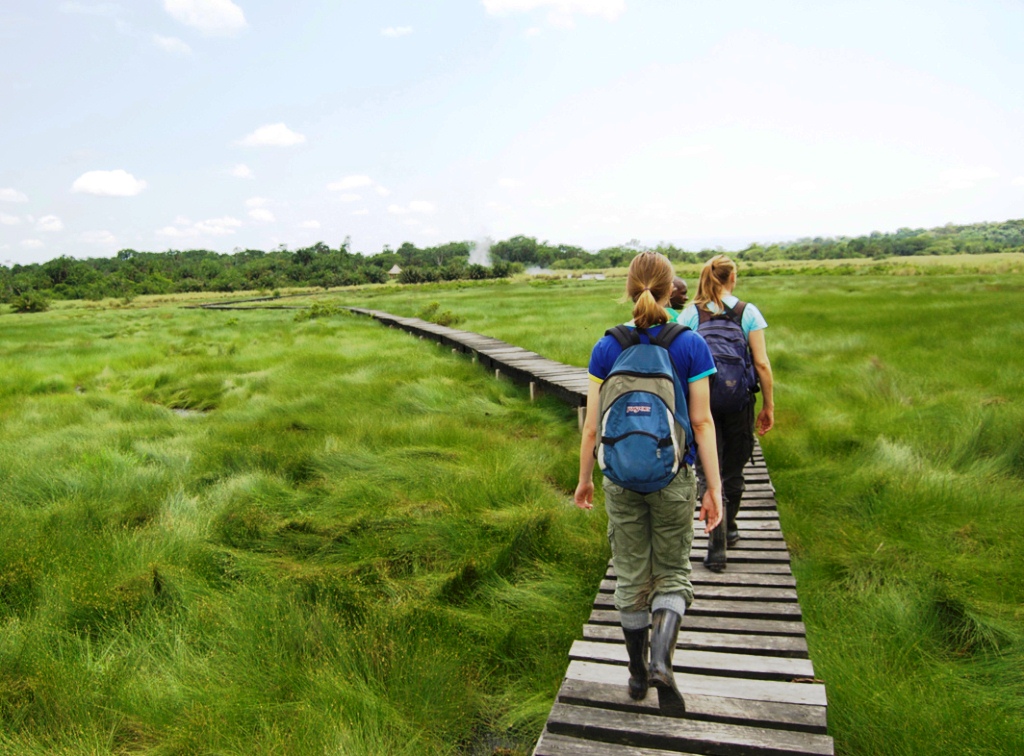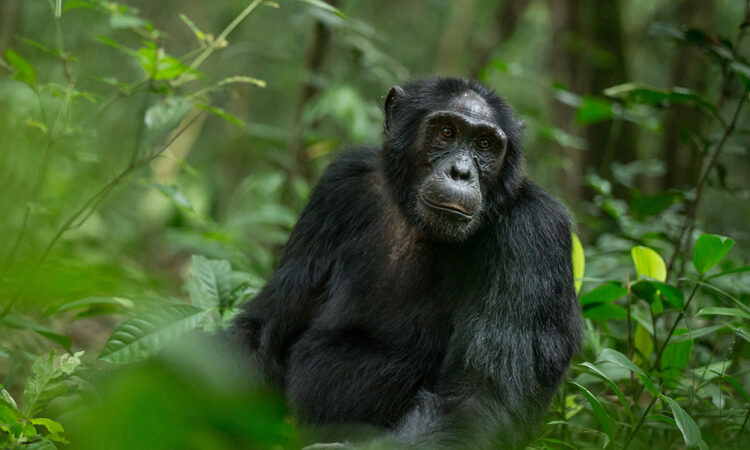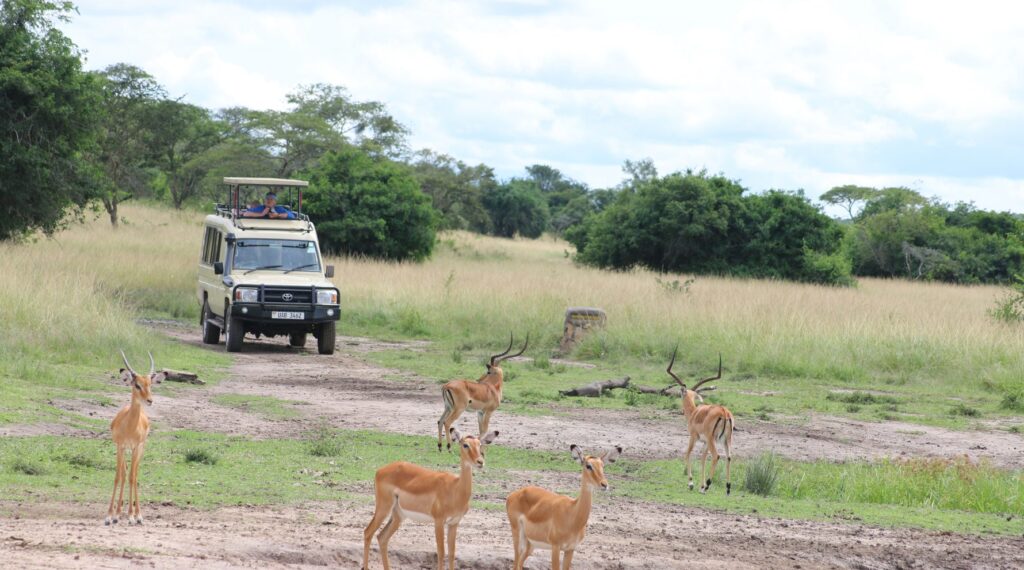Nestled away at the foot of the northern Rwenzori Mountains, Semuliki National Park is one of the least visited national parks in Uganda. It is situated 52 kilometres from the tourist hub of Fort Portal in Bwaba County, a remote part of the Bundibugyo district in the western part of the country.
Semuliki National Park, which spans 220 square kilometres and is located between 670 and 760 metres in elevation, preserves a portion of the Ituri rainforest in the Democratic Republic of the Congo. It is the only place in East Africa to host a true lowland tropical forest and is home to species that are related to those in Central Africa.
The easternmost extension of the Congo Basin’s Ituri forests forms the border of the Semuliki National Park, which is formed by the Semuliki River, which also serves as an international border between Uganda and the Democratic Republic of the Congo.
One of Uganda’s earliest national reserves is Semuliki National Park, which was created in 1926 as the Toro Game Reserve and later elevated to a national park in 1932 under the new name.
FAUNA IN SEMULIKI NATIONAL PARK
Semuliki National Park is home to both Central African and East African plant and tree species. It is primarily composed of a mix of tropical rainforest that stretches up to the Ituri forests in the Democratic Republic of the Congo and savannah grasslands. There are 305 species of trees known to exist in Semuliki National Park, with 125 of those species being exclusive to this park.
WILDLIFE IN SEMLIKI NATIONAL PARK
Wildlife
53 different mammal species can be found in Semuliki National Park, including several primates and 11 endemic mammals like forest elephants, buffaloes, Uganda Kobs, hippos, and crocodiles. Pygmy flying squirrels, Beecroft’s flying squirrels, water chevrotains, target rats, little collared fruit bats, bay duikers, forest buffalo, and mona monkeys are among the park’s endemic mammal species. Potto and Bush baby are among the primates found in Semuliki National Park, along with chimpanzees, baboons, grey-cheeked mangabeys, black-and-white colobus, Central African red colobus, blue, red-tailed, de Brazza’s, vervet, and Dent’s mona monkeys.
Birdlife in Semuliki National Park
With 400 bird species, including 46 species found in the Guinea-Congo biome, forest birds, wetland birds, and grassland birds, Semuliki National Park is a birdwatcher’s paradise. These birds include, among others, the African Piculet, Maxwell’s Black Weaver, Blue-billed Malimbe, Yellow-throated Nicator, Black Dwarf Hornbill, Piping Hornbill, Nkulengu Rail, Leaf-love, and Yellow-throated Cuckoo.
THINGS TO DO IN SEMULIKI NATIONAL PARK
When visiting Uganda, Semuliki National Park offers a variety of thrilling and memorable safari activities. These activities include
Game drives
A thrilling and memorable experience in Semuliki National Park is a game drive, which takes three to four hours and involves three trunks traversing the Tor Semuliki Wildlife Reserve in the open savannah grasslands. In the Semuliki National Park, game drives are available in the morning, beginning at 6:00 am, in the afternoon, beginning at 3:30 pm, and at night, ideal for seeing nocturnal creatures like pottos and white-tailed mongooses.
Open-roof safari vehicles are used for game drives, providing an opportunity to see both large and small animals, including warthogs, crocodiles, savannah elephants, buffaloes, Uganda Kobs, hippopotamus, leopards, and elusive bush babies.
Bird watching
With over 400 bird species, including 46 species unique to the Guinea-Congo biome and found only in East Africa, Semuliki National Park is a birder’s paradise and one of the best places to go birding in Uganda. Birding in this park provides the chance to see species like African Piculet, Maxwell’s Black Weaver, Blue-billed Malimbe, Yellow-throated Nicator, Black Dwarf Hornbill, Nkulengu Rail, Piping Hornbill, Yellow-throated Cuckoo, and Leaf-love, among others.
Visiting the Sempaya Hot springs
The Sempaya Hot Springs, which have both male and female hot springs, are the park’s most picturesque feature and a must-see while on a safari in Uganda. The male hot spring, known as Bintente, and the female hot spring, known as Nyasimbi, are located 30 minutes’ walk apart and have boiling water that can reach a temperature of 100 degrees Celsius. You can cook eggs and bananas in the pool of water that forms around the hot spring while visiting the Sempaya hot springs. You will also enjoy the gorgeous hot springs and witness the hot, bubbling water spouting up to two metres high.
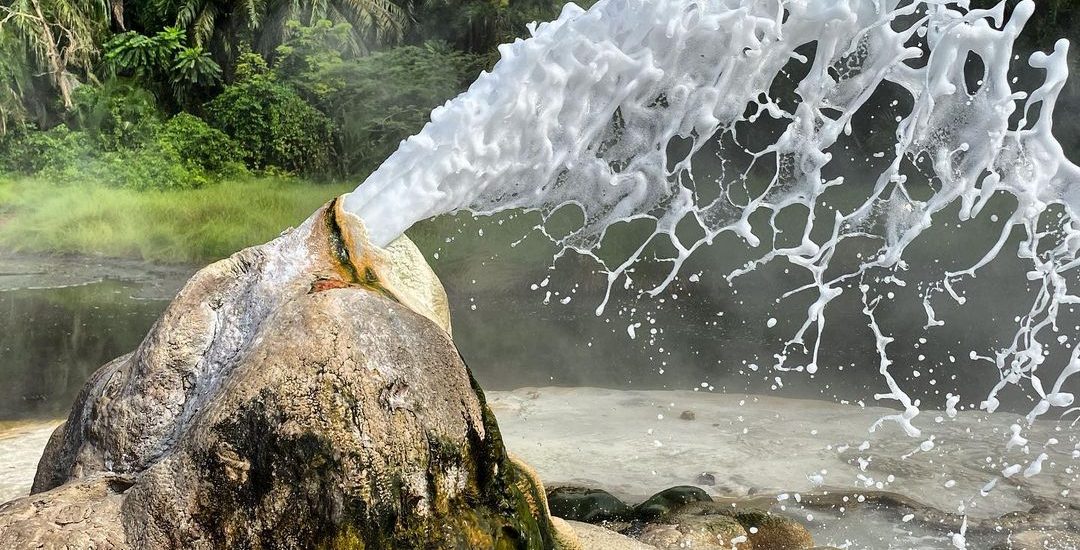
Boat rides
Semuliki National Park offers boat rides on the Semuliki River, which flows through the park. The boat ride experience is truly unique, providing breathtaking views of the park’s beautiful landscape and creatures like pygmy hippos, sitatungas, lizards, and crocodiles that meander along the river’s banks. Boat rides have been discontinued, though, because of the river’s frequent flooding.
Hiking and nature walks
One of the best ways to explore Semuliki National Park is to go on an exciting safari activity like hiking or nature walks. There are three main trails for this activity: the Kirumia Trail, the Red Monkey Trail, and the Sempaya Nature Trail, which all offer fantastic chances to see wildlife and birds.
Primate tracking
Primate tracking is an exciting activity that can be done in the forests scattered throughout Semuliki National Park, which are home to a variety of primates. In Semuliki National Park, tracking primates through the forests takes four to six hours. During this time, you can see a variety of primates in their natural habitats, such as the central African red colobus, Dent’s Mona monkeys, blue and red-tailed monkeys, and Brazza monkeys.
Cultural visit to the Pygmy village
The batwa people, the original occupants of the Ituri forests in the Democratic Republic of the Congo, live in the pygmy village located along the borders of Semuliki National Park. During your cultural visit, you will get a taste of the batwa way of life, customs, and culture through a variety of activities you will witness, like building houses out of local materials, gathering medicinal plants to use as medicine to cure various illnesses, watching demonstrations of hunting skills, and being e
BEST TIME TO VISIT SEMLIKI NATIONAL PARK
The best times to visit Semuliki National Park are during the dry season, which runs from January to February and June to September. During this time, animals can be seen congregating at watering hotels to drink water.
You can visit this park at any time of year, and since it is less crowded, you will essentially have the place to yourself. The best times to see game are during the dry seasons, which run from January to February and June to September. During this time, most animals stay close to water.
